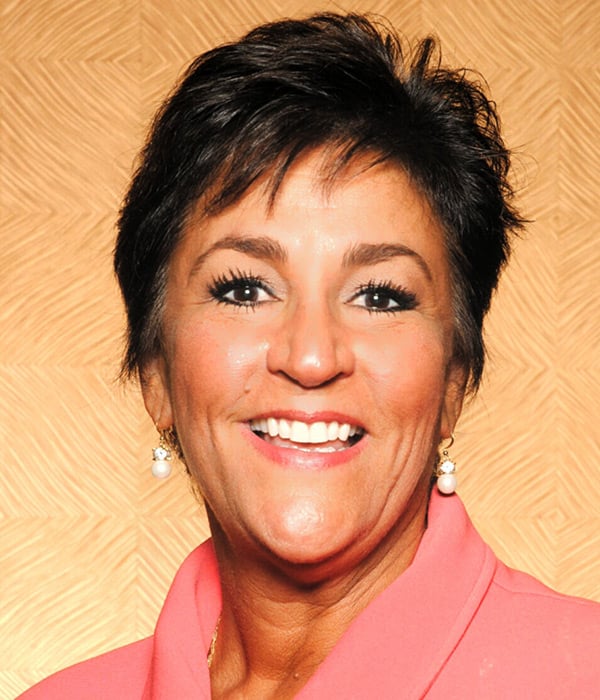Your female patient comes in complaining of anxiety, body aches, hair falling out, heavy or irregular periods, weight gain, moodiness, not being able to fall asleep or maybe stay asleep, and/or depression. Or maybe she has just a couple of these symptoms. You grab your prescription pad and start writing multiple medications for multiple indications, one for depression, sleep, and another for body aches.
But let us look at her not as just as a set of symptoms, but as where she is in her reproductive life. Is she in her mid-late forties?
Perhaps, she has had a hysterectomy in the past? Has anything changed in her life that would cause these drastic changes? Are the new symptoms? Instead of an imbalance in her neurotransmitters, thyroid problems, or a sleep issue, could it just be as simple as she is going through the menopausal transition?
Women in North America will likely experience natural menopause (12 months without a period) between ages 45 and 58, averaging around age 51. Some women, however, reach this phase in their 30s, others in their 60s. Smokers may get there about two years earlier than nonsmokers, while race, age at first period, use of birth control pills, or fertility medications do not seem to be determining factors. In this phase, your body will start providing helpful physical clues that the menopause process is starting. Some common, normal signs include irregular periods, hot flashes, vaginal dryness, sleep disturbances, and mood swings—all results of unevenly changing levels of ovarian hormones (estrogen and progesterone) in your body. In the months or years leading up to menopause (perimenopause), women might experience these signs and symptoms:
- Irregular periods
- Vaginal dryness
- Hot flashes
- Chills
- Night sweats
- Sleep problems
- Mood changes
- Weight gain and slowed metabolism
- Thinning hair and dry skin
- Loss of breast fullness
- Anxiety
- Forgetfulness
Physical and psychological changes, as well as other midlife stressors, can result in increased anxiety. Feelings of anticipation, dread, or fear are common and usually resolve without treatment. Frequent episodes of anxiety may be a warning sign of a panic disorder. “Panic attack” symptoms include shortness of breath, chest pain, dizziness, heart palpitations, or feelings of “going crazy” or feeling out of control. Sometimes the unsettling feelings that precede a hot flash can mimic or trigger such an attack. As ovarian hormones come in pulses, especially estrogen, the peak can cause palpitations, anxiety, wakefulness, and hot flashes. As the estrogen levels begin to fall, chills, forgetfulness, fatigue may set in. Many perimenopausal women report difficulty concentrating or short-term memory problems. These difficulties often frighten women, who may think they have early symptoms of Alzheimer’s disease. Many women may suffer all of these in silence for fear that it is something more serious.
They may notice more physical symptoms: hair loss, urinary incontinence, dry skin, body aches, weight gain, vaginal dryness, pain with sex, or low sex drive. When your estrogen levels decline, your risk of cardiovascular disease, cholesterol changes, and changes in bone density increase. Treating each of the symptoms is burdensome and expensive; do a full menopause assessment.
Hormone therapy (HT) remains the most effective treatment for vasomotor symptoms (VMS) and the genitourinary syndrome of menopause (GSM) and has been shown to prevent bone loss and fracture. The risks of HT differ depending on the type, dose, duration of use, route of administration, the timing of initiation, and whether a progestogen is used. Treatment should be individualized to identify the most appropriate HT type, dose, formulation, route of administration, and duration of use, using the best available evidence to maximize benefits and minimize risks, with periodic reevaluation of the benefits and risks of continuing or discontinuing HT. For women aged younger than 60 years or who are within ten years of menopause onset and have no contraindications, the benefit-risk ratio is most favorable for the treatment of bothersome VMS and for those at elevated risk for bone loss or fracture. For women who initiate HT more than 10 or 20 years from menopause onset or are aged 60 years or older, the benefit-risk ratio appears less favorable because of the greater absolute risks of coronary heart disease, stroke, venous thromboembolism, and dementia. Longer durations of therapy should be for documented indications such as persistent VMS or bone loss, with shared decision-making and periodic reevaluation. For bothersome GSM symptoms not relieved with over-the-counter therapies and without indications for the use of systemic HT, low-dose vaginal estrogen therapy or other therapies are recommended.
Hormone therapy has been shown in double-blind RCTs to relieve hot flashes and is approved as first-line therapy for the relief of menopause symptoms in appropriate candidates. Many times, antidepressants are given first, yet many as half of these women who take SSRIs report the start of or compounded sexual dysfunction and weight gain. These medications are not without their own side effects. These products should be started first only on women that hormone therapy is contraindicated: breast cancer, cardiovascular disease (DVTs) or other contraindications to hormones.
Low-dose vaginal estrogen for management of GSM symptoms, which are often progressive, and although over-the-counter therapies may relieve symptoms, they do not treat the underlying pathophysiology of GSM in women at any age.
References:
The 2017 hormone therapy position statement of The North American Menopause Society. Menopause: The Journal of The North American Menopause Society Vol. 24, No. 7, pp. 728-753 DOI: 10.1097/GME.0000000000000921 2017 by The North American Menopause Society
NAMS. 2017. USPSTF releases statement on hormone therapy for prevention of chronic conditions in postmenopausal women. JAMA. 2017;318(22):2224-2233.
